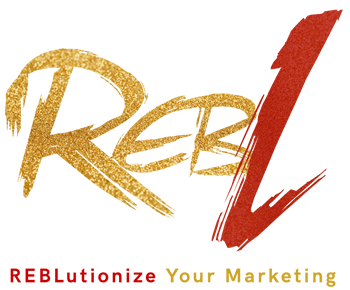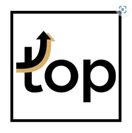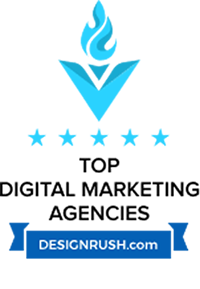March 4, 2025
No Comments
Crafting engaging blogs poses a real challenge for agencies focused on maintaining consistent, high-quality content across diverse platforms. It’s important to have a solid content strategy in place. This strategy helps gain efficiencies, streamlining the blog creation process and improving its impact.
We’ll explore strategy development, essential tools, SEO tactics, boosting engagement, monetization potential, and performance analysis. Using these strategies will not only improve content quality but also lead to higher customer satisfaction and better outcomes.
Understanding the Importance of Blog Creation
Creating a blog is vital for any business or personal brand in establishing an online presence. It involves crafting and uploading content consistently to engage your audience.
A blog isn’t just words on a page. It’s about meaningful, engaging content that resonates with readers. Regular updates help maintain visibility and build authority in your field.
Businesses that prioritize blogs often boost their credibility and strengthen connections with target audiences. By sharing valuable insights, bloggers position themselves as thought leaders. This builds trust and loyalty among readers.
The continual influx of new content can improve search engine rankings. This drives more traffic to your website.
Setting Clear Blogging Goals
Setting precise blogging goals can significantly affect a content strategy’s success. Think of it as laying a roadmap before a journey.
Identify what you want to achieve, like increasing audience engagement, traffic growth, or brand awareness. Define specific, measurable goals to track progress.
If the objective is to boost traffic, pinpoint the target numbers and timeframe. To engage more deeply with your audience, set targets for comments or shares.
Goal setting helps align content with desired outcomes. It ensures every post supports broader business objectives.
For a detailed guide on crafting smart blogging goals, visit: [LINK: Blogging goals tips guide].
Setting Clear Blogging Goals
Clear blogging goals significantly impact the success of your content. They help align your efforts with your business objectives, ensuring each post supports broader targets.
Establishing Traffic Targets
- Identify Desired Outcomes: Determine what you hope to achieve, like increased website visits or higher engagement rates.
- Set Measurable Goals: Assign specific numbers, such as aiming for a 20% traffic increase in six months.
- Utilize Analytics: Track your progress toward these targets using analytics tools. Regularly review performance to adapt your strategy.
Aligning Content with Business Objectives
- Strategic Alignment: Match content topics with your business’s mission and services.
- Focus on Actionable Insights: Provide solutions or insights that reflect your business expertise and offer value to readers.
Encourage Continuous Learning
- For additional insights into crafting effective blogging strategies, refer to our resources on audience engagement techniques.
Developing a Blog Content Strategy
A well-structured strategy is vital for any blog’s success. It aligns your content with long-term brand objectives, ensuring each post serves a purpose.
An effective content strategy supports brand goals by:
- Setting clear objectives that match business priorities.
- Identifying target audiences using listening tools and feedback mechanisms.
- Crafting content that addresses audience needs and encourages engagement.
- Establishing a consistent posting schedule to build a loyal readership.
For audience targeting:
- Define key demographics and interests.
- Use analytics to understand audience behavior.
- Adjust content based on feedback and changing trends.
By implementing these strategies, you can create content that resonates with your audience and strengthens your brand identity.
SEO Best Practices for Blogging
In the competitive arena of digital content, SEO best practices significantly increase your blog’s visibility. Start with keyword research as the foundation for optimizing your blog.
Identify the terms your target audience searches for and integrate these keywords naturally into your content to maintain readability and engagement. Avoid keyword stuffing.
Optimizing Blog Content for Search Engines
Headlines are crucial in attracting both readers and search engines. Use clear and concise headlines that include your primary keywords. Craft compelling meta descriptions to entice readers and include relevant keywords.
Don’t overlook alt text for images. It describes images for those using screen readers and allows for organic keyword inclusion.
Mobile optimization is essential. Ensure your blog is mobile-friendly to enhance user experience and positively impact search rankings. Search engines prioritize mobile sites due to the rise in smartphone usage.
Regularly update and audit your content to keep it fresh and relevant. This can boost your SEO standings and enhance user engagement.
Tools to Simplify Blog Creation
Tools play a vital role in making blog creation more efficient and engaging. Whether you’re managing content, enhancing productivity, or improving reader interaction, the right tools can make all the difference.
Consider tools that streamline content management and enhance workflow efficiency. For instance, using a content management system (CMS) like WordPress or HubSpot can simplify the process of organizing and publishing posts. These platforms offer user-friendly interfaces that make content updates quick and straightforward.
Tools like Grammarly ensure your writing is polished and professional by checking grammar and style. Canva provides an easy way to create visual content, turning complex ideas into visually appealing graphics.
When selecting a CMS, prioritize usability and flexibility. Opt for systems that allow for easy customization and integration with other tools. This helps tailor the blogging experience to fit your specific needs.
Visual tools also play a crucial role in keeping content engaging. Use graphics and infographics to break up text and illustrate concepts clearly. This approach keeps readers interested and makes complex information more digestible.
Monetization Strategies for Your Blog
Blog monetization can turn your hobby into a cash generator. As you’ve built an engaging space for readers, finding income paths can be rewarding. Whether it’s a personal blog or a content avenue for your agency, several strategies can financially benefit you.
Advertising, like banner ads and pay-per-click models, remains popular. Partnering with networks like Google AdSense enables ads within your blog, earning revenue from impressions or clicks.
Sponsored content is another path. Brands often seek collaborations with bloggers for reviews or promotions. By aligning with products or services that resonate with your readers, authenticity is maintained while enhancing your blog’s value.
Diversifying Monetization Streams
It’s important not to rely on one revenue stream. Diversifying protects against fluctuations, ensuring steady income.
- Affiliate marketing is appealing, especially if you’re passionate about certain products. By embedding affiliate links, earn commissions on sales from your site. Ensure recommendations align with your readers’ interests for a natural fit.
- Membership models are also promising. Offering premium content or exclusive perks to paying members taps into a community supporting your work directly. Bonus blog posts or behind-the-scenes insights could incentivize subscriptions.
- Lastly, digital product sales open many doors. E-books, online courses, or downloadable templates exhibit your expertise and offer value to your audience. Creating and marketing your products provides a direct revenue stream from readers who trust your brand.
To explore models suited to your niche and audience, check out our Monetization model guide. Using a mix of these strategies could make your blog a thriving income source from diverse avenues.
Analyzing and Adapting Blog Performance
Understanding the metrics that matter is essential for evaluating your blog’s success. Analytics tools can consistently monitor performance, offering insights into what’s effective and where improvements are needed.
Using Analytics to Improve Blog Traffic
Make data-driven decisions to optimize your blog. Metrics like bounce rates and page views reveal how engaging your content is. A high bounce rate may indicate a disconnect with your audience.
Pages with numerous views likely resonate well. Pay attention to user behavior patterns, as analytics can show visitor paths. This helps identify which topics generate the most interest.
Observe where your audience lingers. Pinpoint areas to expand content or boost internal links to maintain reader engagement.
Use analytics to inform decisions and refine marketing efforts to better align with your audience’s needs. Adapting your blogging strategy based on these insights is an ongoing process.
Continuously monitor and adjust your approach to evolve your content strategy. This helps keep your blog relevant and engaging to your readers.
Search Engine Considerations for Blog Content
Creating blog content with search engines in mind is essential. Here are some strategies to focus on:
- Keyword Selection: Begin with a solid understanding of your target keywords.
- Headlines: Craft attention-grabbing headlines that include your keywords.
- Alt Descriptions: Ensure images have descriptive alt text to enhance SEO.
To further optimize, consider these techniques:
- Meta Descriptions: Write clear and informative meta descriptions to summarize your content.
- Content Audits: Regularly audit and update your content for ongoing improvement.
- Internal Links: Use internal links to guide readers and improve site navigation.
Take a moment to reflect on these methods. Adopt the strategies that align with your objectives, and transform your blog into a valuable resource for your audience. Consider your next steps and explore detailed guides to deepen your understanding.
By implementing these strategies, you’ll position your blog for success in search results.





